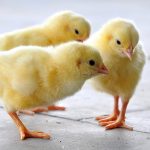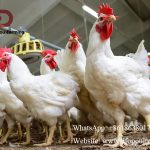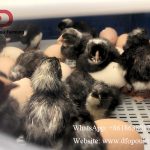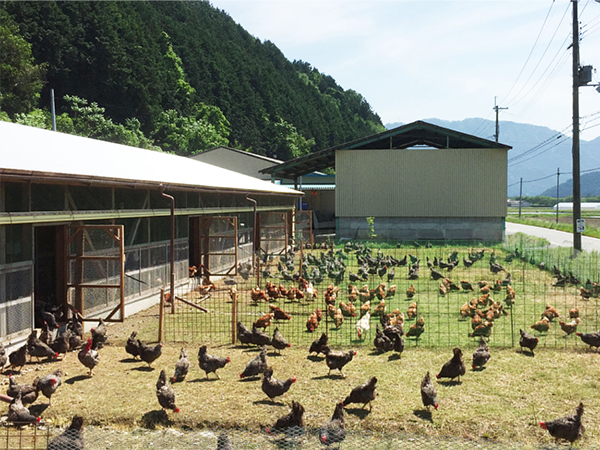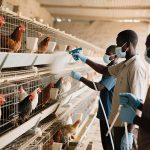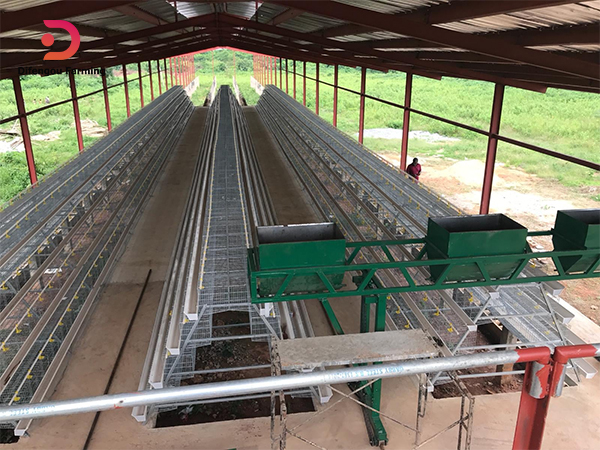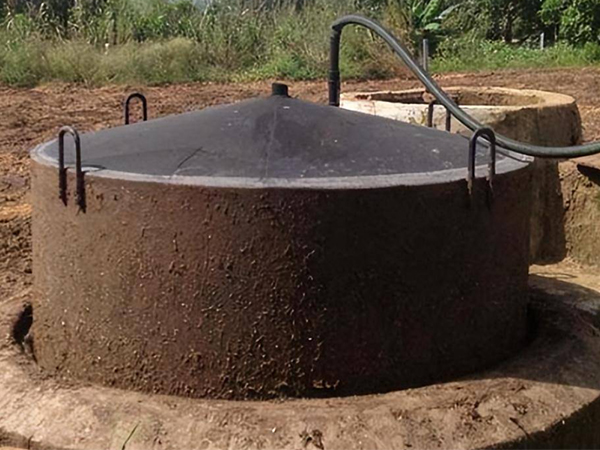The process for chicken to digest the food and produce eggs
Chicken digestion process
The digestion process includes the various physical and chemical changes that food must undergo before it is digested in the intestines. The process includes swallowing, soaking, and grinding of food in the muscular stomach.
Chickens use their beaks to eat food, which is then soaked in saliva in the mouth. Then, the food and water are forcibly swallowed by raising the head and neck, relying on gravity and the negative pressure generated by the esophagus (in livestock, food is forcibly swallowed by the soft palate). The digestion process is shown in the schematic diagram (Figure 2-2). The food is broken down by the combined action of various digestive enzymes from saliva, stomach, intestine, pancreas, bile from the liver, hydrochloric acid produced in the stomach, and bacteria. The end products of decomposition (glucose, small peptides, amino acids, fatty acids, etc.) are mainly absorbed in the small intestine. The two developed cecum also plays a certain role in digestion.
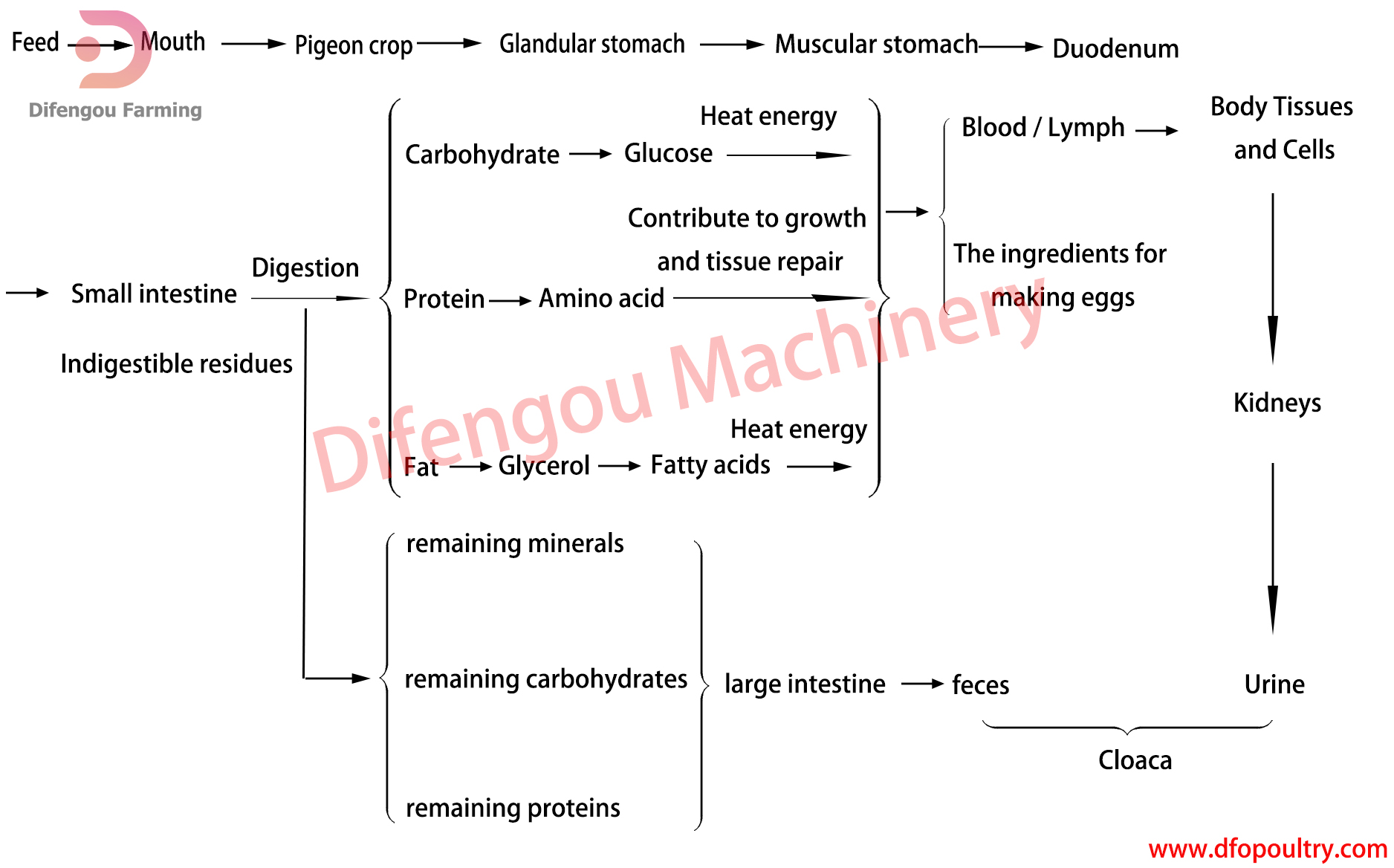
The ingested carbohydrates must first be broken down into monosaccharides (glucose) before they can be absorbed; fats must be hydrolyzed into glycerol and fatty acids before they can be absorbed by the small intestine, which requires the action of bile to emulsify fats and lipase to break down fats; proteins are hydrolyzed into small peptides and amino acids before they can be absorbed by the intestines; indigestible residues (remaining minerals, carbohydrates, and remaining proteins), most enter the large intestine, and a small part enters the cecum. After the water and minerals in the residue are absorbed again in this place, the formed feces and urine excreted by the kidneys (poultry have no bladder to store urine to reduce weight and facilitate flying) are jointly discharged from the cloaca. The normal feces of chickens should be dark green, shaped like a hat, and the white substance attached to the upper part is urine. Chicken urine mainly contains uric acid, which is highly corrosive.
Detailed explanation
1. Swallowing
Chickens use their beaks to pick up food, such as grains, seeds, insects, and worms. The food is then passed to the mouth, where it is chewed with the beak and mixed with saliva. Saliva contains enzymes that begin to break down carbohydrates.
2. Soaking
The food and saliva are then passed to the esophagus, which is a muscular tube that transports food to the stomach. The esophagus is lined with mucus, which helps to lubricate the food and prevent it from sticking to the walls of the esophagus.
3. Grinding
The food enters the muscular stomach, which is a muscular sac that grinds the food into a fine paste. The muscular stomach contains gastric juices, which contain hydrochloric acid and enzymes that further break down carbohydrates, proteins, and fats.
4. Digestion in the small intestine
The food paste then passes to the small intestine, where the majority of digestion and absorption of nutrients takes place. The small intestine is lined with villi, which are finger-like projections that increase the surface area of the intestine for absorption.
The small intestine receives digestive juices from the pancreas, liver, and gallbladder. The pancreas secretes digestive enzymes that break down carbohydrates, proteins, and fats. The liver secretes bile, which helps to emulsify fats. The gallbladder stores bile until it is needed for digestion.
The nutrients that are broken down in the small intestine are absorbed into the bloodstream. The nutrients that are not absorbed are passed to the large intestine.
5. Digestion in the large intestine
The large intestine is responsible for absorbing water and electrolytes from the food residues. The large intestine also contains bacteria that help to break down fiber.
The food residues that are not absorbed in the large intestine are passed to the cloaca, where they are excreted as feces.
6. Excretion of urine
Chickens do not have a bladder to store urine. Instead, urine is excreted directly into the cloaca. Urine is a mixture of water, urea, and other waste products.
Summary
The digestion process in chickens is a complex process that involves the breakdown of food into nutrients that can be absorbed into the bloodstream. The digestive system of chickens is adapted to their diet, which is mainly composed of grains, seeds, insects, and worms.

